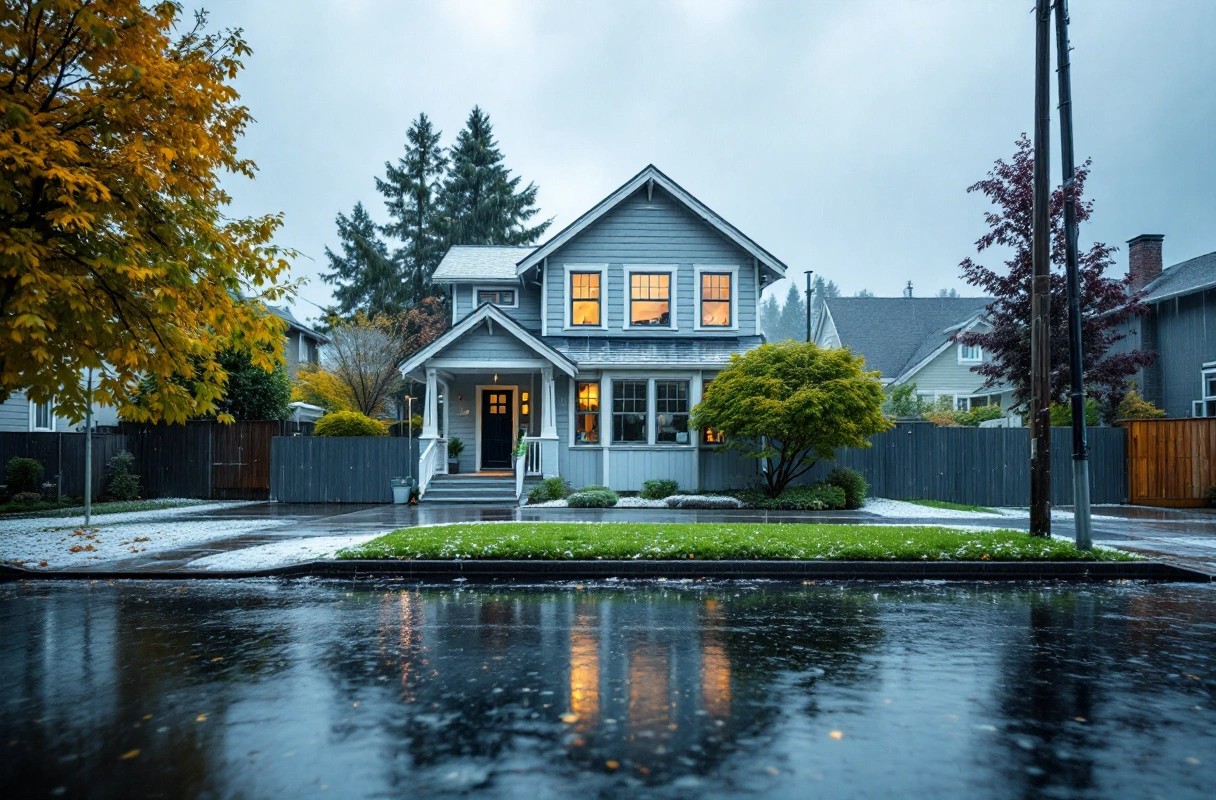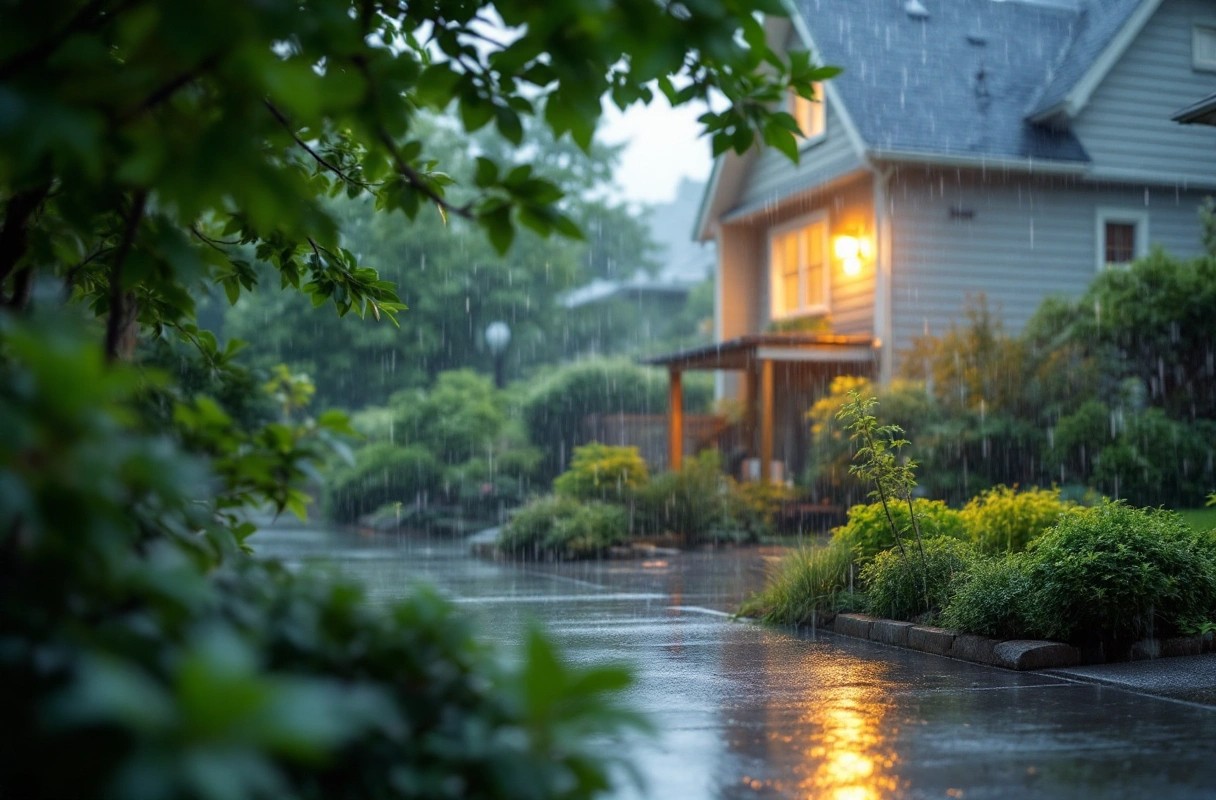With Seattle's reputation for rain, especially during certain months, ensuring your rental property is prepared for the downpour is essential. The city experiences significant rainfall, particularly in the late fall and winter months, which can lead to various challenges for property owners. This article will explore how to effectively protect your rental property during Seattle's rainiest months, from maintenance tips to tenant safety measures.
Navigating Seattle's Unique Weather Patterns

Seattle's weather is characterized by its mild, wet winters and relatively dry summers. The city receives an average annual rainfall of approximately 37 inches, with the majority falling between October and March. These months are marked by persistent drizzles and heavier downpours that can create challenges for rental property owners. Understanding these patterns is critical to preparing for the rainy season, as it allows landlords to anticipate potential issues such as water damage, flooding, and roof leaks.
The impact of rainfall on rental properties can be significant. Excess moisture can lead to mold growth, which poses health risks to tenants and can damage the property itself. Additionally, heavy rains can cause erosion around the foundation, leading to structural issues over time. As a property owner, being proactive in understanding Seattle's weather patterns is essential for protecting your investment.
Preparing Your Property for the Rainy Season

Preparation is key when it comes to safeguarding your rental property during the rainy season. Essential maintenance tasks should be completed before the first heavy rains of the year. This includes inspecting and cleaning gutters to ensure proper drainage, as clogged gutters can lead to water overflow and damage to the roof and siding. Additionally, checking for any leaks in windows, doors, and roofs should be a priority.
Creating a property protection checklist can help you stay organized and ensure that no essential tasks are overlooked. This checklist might include:
- Inspecting and cleaning gutters and downspouts
- Checking the roof for missing or damaged shingles
- Sealing windows and doors to prevent leaks
- Ensuring that landscaping is sloped away from the foundation
- Testing sump pumps and drainage systems
By completing these tasks, you can significantly reduce the risk of damage to your property during Seattle's rainiest months.
Implementing Storm Damage Prevention Strategies

Minimizing storm damage is crucial for maintaining the integrity of your rental property. Best practices for storm damage prevention include regular inspections and maintenance of the exterior of the property. This involves checking the condition of siding, windows, and doors, and addressing any potential vulnerabilities that could allow water intrusion.
Utilizing technology for property monitoring can also be beneficial. Installing smart home devices such as water leak detectors can alert you to issues before they escalate. These devices can provide real-time notifications if they detect water where it shouldn't be, allowing you to respond quickly and mitigate damage. Additionally, using weather monitoring apps can help you stay informed about upcoming storms, giving you time to prepare.
Understanding Your Responsibilities as a Seattle Landlord
As a landlord in Seattle, you have specific legal obligations to maintain your rental properties. This includes ensuring that the property is safe and habitable for tenants, which is particularly important during the rainy season. For instance, you are required to address any water intrusion issues promptly to prevent mold growth and ensure tenant safety.
Effective communication with tenants during the rainy months is also a best practice. Keeping them informed about potential weather events and what to do in case of emergencies can foster a sense of security. Provide tenants with clear instructions on how to report maintenance issues related to water damage, and ensure they know how to access emergency contacts if needed.
Creating a Seasonal Property Management Plan
Developing a seasonal property management plan is essential for effectively managing rental properties during Seattle's rainiest months. This plan should outline the specific steps you will take to prepare the property and respond to any issues that arise. Seasonal planning can help you anticipate challenges and allocate resources more effectively.
Integrating tenant feedback into your property management can also enhance your approach. After heavy rains, consider asking tenants for their input on any issues they experienced. This feedback can inform future preparations and help you make adjustments to your maintenance strategies. Engaging with tenants not only strengthens your relationship with them but also contributes to the overall safety and satisfaction of your rental property.
The Intersection of Rain Preparedness and Rental Success
As an independent landlord or small property owner in Seattle, understanding how to protect your rental property during the rainy months is essential for maintaining your investment and ensuring tenant satisfaction. By preparing your property, implementing storm damage prevention strategies, and effectively communicating with your tenants, you can navigate the challenges posed by Seattle's weather.
At RentalRiff, we recognize the unique challenges that come with managing rental properties in Seattle's rainy climate. Our services are designed to support independent landlords and small property owners who seek professional maintenance and tenant support without the cost of full-service property management.
If you are looking for assistance in implementing these strategies or need help with property maintenance, visit our website or contact us today.

